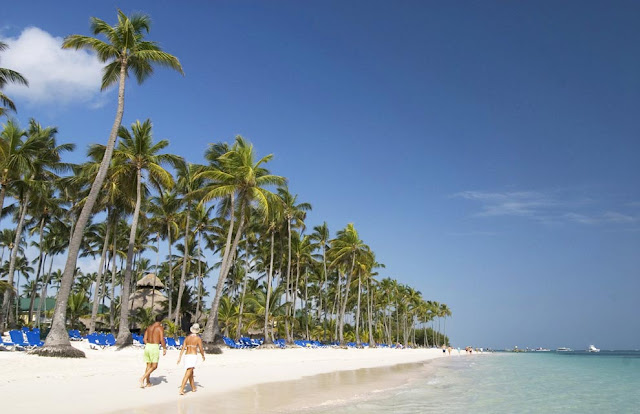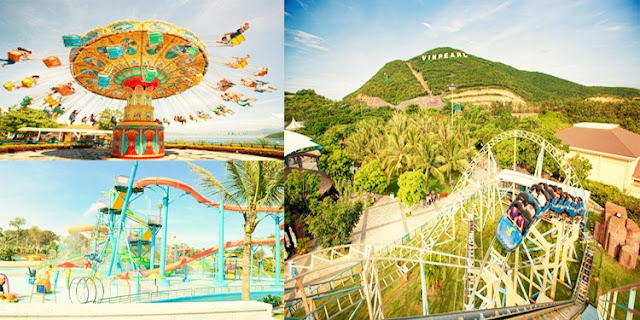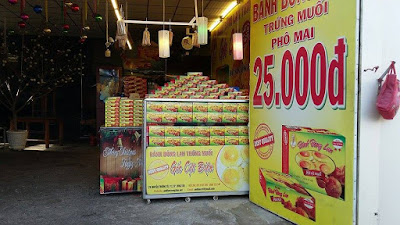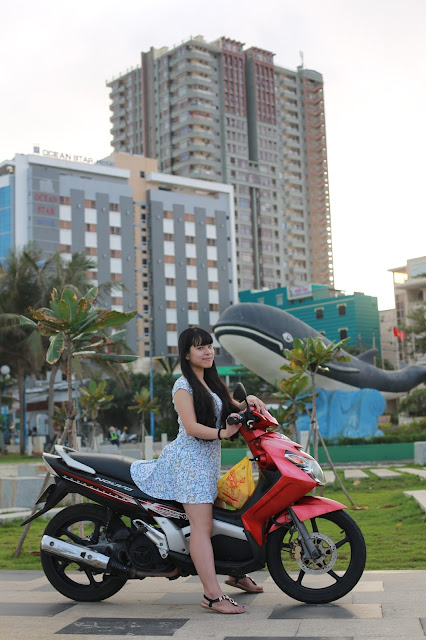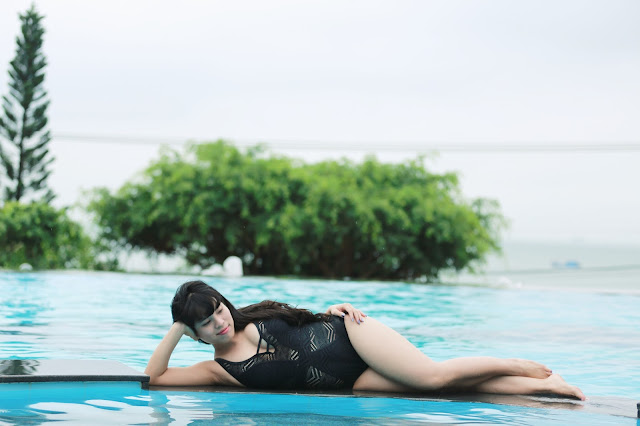I'm actually not a fan of history but it's necessary for being a tour guide ( lol). I had to visited 3 museums and 2 pagodas on last Sunday ( exhausted >"< ) and now I will show you the first museum " Museum of Vietnamese History in Ho Chi Minh City"
The Museum of Vietnamese History is located at 2 Nguyen Binh Khiem Street, Ben Nghe Ward, District 1, in Ho Chi Minh City, Vietnam. Formerly known as the Musée Blanchard de la Brosse, built by Auguste Delaval in 1926, and The National Museum of Viet Nam in Sai Gon, it received its current name in 1979. It is a museum showcasing Vietnam's history with exhibits from all periods.
Tuesday to sunday
+ 8:00 AM – 11:30 AM
+ 1:30 PM – 5:00 PM
Closed on monday
Below is some photos taken by me:
Prehistoric Period (500,000 years ago to 2879 BC).
Shards of footed drinking vessels, crude chopping tools, pointed tools made from basal rocks bear signs of use by prehistoric man in hunting, cutting for cooking or in fighting. Evidence of actions frequently practised includes cutting, stabbing, throwing, shaving, etc. The use of sharpened and pointed tools show prehistoric man had progressed beyond animal life.
This piece of basal rock with sharp edges which fitted the men's hands and often used as a tool or fighting weapon.
 |
| stone tools |
Metal Age (2879–179 BC), including artifacts related to the Dong Son culture of northern Vietnam and the Sa Huynh culture of central Vietnam.
Production Tools of Đông Sơn Culture
These include socketed bronze axes and ploughshares. Bronze axes came in various forms: angular, fan-shaped or slipper-shaped, perhaps made for use in different situations. The ploughshare in the shape of a stingray and with a large socket shows good proportions and suitability for use in cultivation in a water-logged field.

Bronze drum: tympanum and mantle. The mantle is divided into three separate sections: upper, middle and lower. The tympanum and the mantle are decorated with relief images of the sun motif with multiple rays, surrounded by concentric circles of saw-toothed designs and long-beaked birds moving from left to right. The upper section of the mantle also features saw-toothed designs, short parallel lines, and tangential circles. The middle section features lozenge designs, circles with dots, saw-toothed designs, human figures with feathered headgears, musicians, men pounding rice, boats and houses. Four handles with fishbone motifs are distributed evenly around the mantle.
 |
| Dong Son Bronze Drums |
Weapons of Đông Sơn Culture
These include lances, spears, arrows, swords, daggers, battle-axes, and breast-plates.
Breast-plate: In the shape of a cleaver with angular head, long blade, and short back. Often of small size it was used mainly for self defence.
The Đông Sơn dagger is usually with a thin, wide, sharp double-edged blade, and a pointed head. The handle is elaborately made in the shape of the letter T, onion-shaped, or in the form of an appropriately-dressed female but with no hilt. The female form handle is a useful item for studying the clothing and jewelry of the Hùng kings period.
The onion-shaped handle is decorated with numerous rectangular perforations. But the absence of the hilt is a weak point in the design as it does not provide protection in close combat.
Spears and arrows are weapons used in distant combat. Spears may be equipped with retrieving rope, and arrows are shot from various types of crossbows. Archaeology has uncovered a storage house with bronze arrowheads in the Cổ Loa citadel – capital of Âu Lạc under An Dương Vương (present day Đông Anh, Hà Nội). The arrowheads are rather unique with long pointed tip and three sharp edges that enable the arrow to penetrate deep into the target.
The well-proportioned, flat, triangular spearhead that tapers toward a pointed tip has sharp edges and a mid-ridge along its length on both sides. The handle socket has a large diameter and a locking-pin hole to secure the head firmly to the handle. The tip of the spearhead usually features 2-4 small apertures.
 |
| Weapons of Đông Sơn Culture |
Chinese Domination and Struggle for National Independence in the Red River Valley (179 BC – 938 AD)
 |
| Some tools and Artifacts |
Bronze drum: Found in a Mường grave.
This drum consists of 3 parts: a wide tympanum, a tapered mantle and a slightly splayed foot. The tympanum which protrudes beyond the drum body 2-3 cm, features a sun motif in relief with multiple rays and concentric circles of geometrical and floral designs. Distributed evenly around the edge of the tympanum are four toad figurines. The mantle is decorated with geometric designs and motifs of bo-leaf, lemon flower, dragon, phoenix, bee and bird. The shape and decoration are entirely different to that of the Đông Sơn drum. According to Heger classification this drum is classified as a type-II bronze drum.
The differences in shape and decoration on Type II and Type I drums signify the demise of the Đông Sơn culture.
Ewer: It has a long, slim neck, mouth slightly flared vertical flange, and handle in the form of a dragon reaching up from the shoulder and holding the ewer mouth between its jaws. The spout is in chicken-head form, slightly inclined outward, and in symmetry with the handle on the ewer’s opposite side. This is a typical product of the Tang period. The glaze shows some deterioration
Ngô, Dinh, Anterior Lê, Ly Dynasties (939–1225)
Under Lý, Buddhism was highly venerated and the building of pagodas and towers was prolific. Buddha statues and altar pieces made in abundance show a high degree of technical competency and demonstrate national features.
 |
| AMITABHA statue in Phật Tích Pagoda, 11th century |
 |
| Ngô Quyền on Bạch Đằng River Battle |
Tran and Ho Dynasties (1226–1407)
Trần Ceramics
Trần ceramics followed the Lý tradition with a variety of forms. Earthenware was used mainly in construction. Utility glazed wares included celadons, white wares, copper green-wares, brown-wares, and iron-brown wares. In particular there was a group of white-ware with light blue designs the precursor of the blue-and-white from Hải Dương province exported to markets in the Middle East, Japan and Southeast Asia in the early 15th century. Production centres of this period include Thăng Long (Hà Nội), Bắc Ninh, Hải Dương, Nam Định, Ninh Bình, and Thanh Hóa, and the famous complex of Mỹ Thịnh (Nam Định) with products which bear the inscription “Thiên Trường Phủ Chế” (天 長 府 製) or “Vĩnh Ninh Trường” (永 寧 長).
Terracotta Tower (13th century)
In ancient times, the tower served as a reliquary for the remains of kings or important dignitaries. As Buddhism developed the tower was used to store relics of Buddha or as a reliquary for the remains of enlightened bonzes. The tower came to Việt Nam possibly during the period of Chinese occupation. Although during Trần numerous stupas were erected, only two remain today, Bình Sơn tower (Vĩnh Phúc) and Phổ Minh tower (Nam Định). The remains of King Trần Nhân Tông (1278-1293) are interred inside Phổ Minh tower.
As a reliquary for the remains of esteemed dignitaries the tower became a place of destination for pilgrims, and the tower itself became an object of reverence. As the tower is considered to help people focus their mind in meditation, miniature replicas were made and distributed among Buddhist practitioners Such belief must have been widespread in Đại Việt as “Đại Việt sử ký toàn thư” (means the whole history of Đại Việt) recorded several instances during the Lý and Trần periods when the kings ordered thousands of miniature terracotta stupas for distribution throughout the realm. Numerous specimens have been recovered in provinces of northern Việt Nam.
These are multi-storeyed stupas with a square or hexagonal section and a tapering profile. The apex features a gourd-shaped bottle which collects essence from the universe. Each storey features narrow protruding eaves with openings on each side. The decorations on these miniatures are necessarily stylized and simple.

Dynasties from the Lê to the Nguyễn (1428–1788)
There are 80 original artifacts that showcase the arts and culture of the period, including: money, seal, warmth, iron, bronze incense bowl; Bowls, dishes, lamps, incense burners, Chu Dau pottery, Bat Trang pottery
 |
| Old Bronze Bell |
 |
| pottery and porcelain |
Costume plays the significant role in the lives of human beings since the dawn of history. It also shows the development of social conditions of each historical period.
In the history of Vietnam monarchies, the dress codes for Kings and royal officials weremeticulously established to discriminate on position and power in society.
Royal costumes of Nguyen Dynasty (1802- 1945) were the succession of the imperial clothing under the Le Dynasty, were added the normative elements and symbols influenced by Three Teachings (Confucianism, Buddhism and Taoism).
 |
| Clothes of the Officials |
 |
Clothes of the King
|
Under the Nguyễn, cannons were made from bronze, iron or pig-iron, and with different types and styles. In accordance with their sizes, they were given 4 different ranks: general, middle general, great general and superior general. The latter two were often assigned high-sounding names such as “made by imperial order with divine power to destroy enemies superior general”( Ngự chế thần uy phá địch thượng tướng quân) (御製神威破敌上將軍) or “protecting country reassuring the people great general” (保國安民大將軍) (thêm chữ Hán). Among the nine dynastic urns in the Hue Imperial Citadel, two feature 2 types of cannons: the first type named Đại bác (cannon) is carved on Cao urn with a robust 4-node form and mounted on a 4-wheeled carriage; the second type named Luân xa pháo (cannon on wheels) is carved on Nhân urn with a slim form and fitted with two large wheels with spokes.
 |
| The Cannons |
Beside of Vietnamese history, the Museum also has many collections of artifacts of Champa, Stone sculptures of Cambodia, minority ethnics' clothes, cannons, etc and especially a MUMMYYYYYYYY!!!!!!!!!!! A Real One Yes, it's true. You can find her in the room number 15 in the museum at 2 Nguyễn Bỉnh Khiêm, Hồ Chí Minh city ( next to the zoo )
Check it out here
REAL MUMMY IN HO CHI MINH CITY
P/s Please Don't take photo of the mummy
Don't say bad things in the area displaying the mummy
Don't look in the eyes ( actually no eyes any more) of the mummy
Sorry I'm too terrified to show her here
For more information, click the link below:
Source :
http://baotanglichsuvn.com/


























